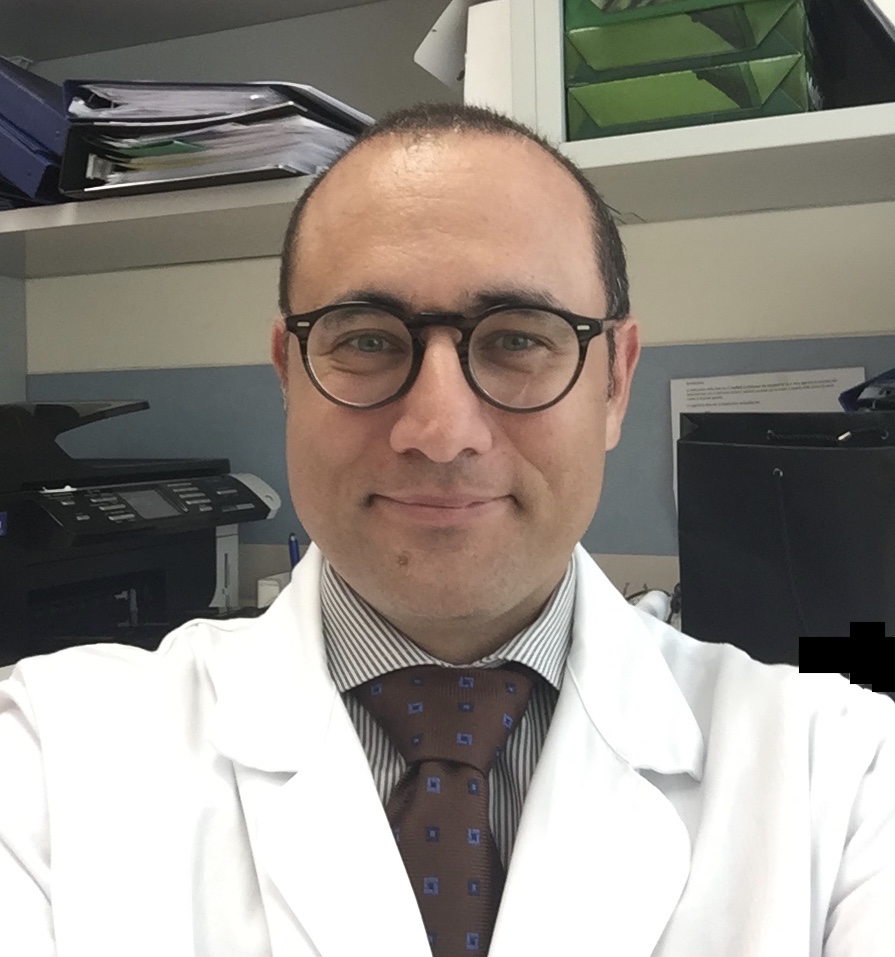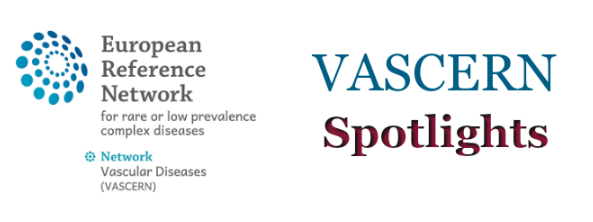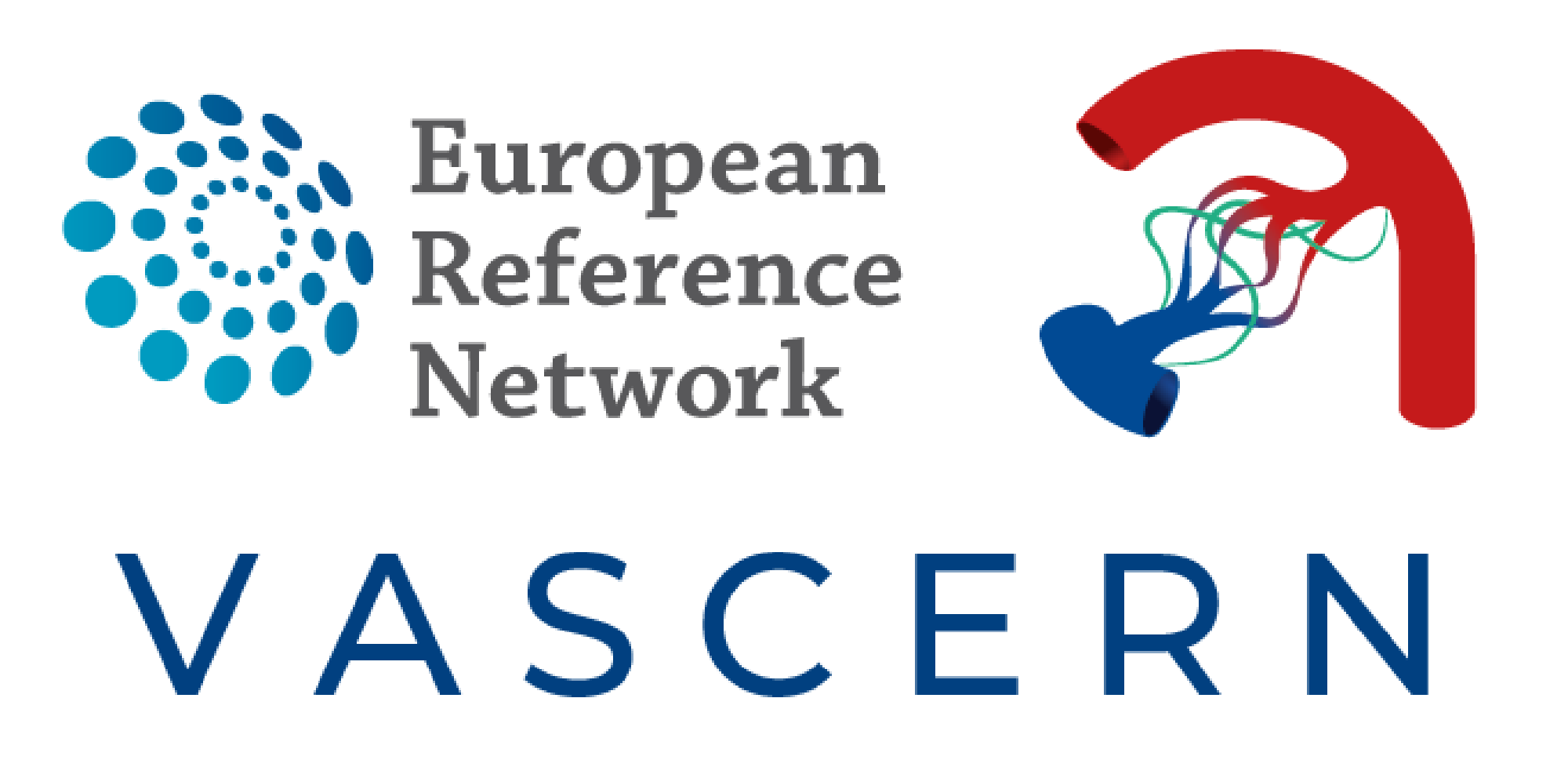

In this edition of VASCERN Spotlights we interview Dr. Andrea Diociaiuti, a dermatologist from Italy and member of the Vascular Anomalies Working Group (VASCA WG). Dr. Diociaiuti shares what attracted him to the specialization of dermatology and vascular anomaly management, the challenges of working in the rare disease field and what he enjoys most about being a part of VASCERN and the European Reference Networks.
1. What disease(s) do you specialize in (or what is your medical specialty) and what interested you in this field?
I am a dermatologist specializing in rare diseases. Since 2001 I have been involved in the management of vascular anomalies in a multidisciplinary team. I found this field particularly interesting because of its pathogenetic complexity. Vascular anomalies include both tumors and malformations. Many of the latter are secondary to genetic mutations, whose discoveries have recently paved the way for new possible targeted therapies specific to the single mutation. New treatments have also been made available in the last decade for vascular tumours, which are extremely effective, such as propranolol for infantile hemangiomas. My interest lies in the complexity of the subject, which at the same time presents an enormous potential for development of advanced therapies.
2. How did you become involved in VASCERN?
I became involved with VASCERN thanks to the Scientific Director of my Hospital: Bambino Gesù Children’s Hospital in Rome, Italy. The participation in the ERNs was considered as strategic for the opportunities it would offer by connecting the most important European Healthcare Providers and their expert centres dealing with vascular anomalies. It is a fundamental opportunity and the most effective weapon in fighting rare diseases in particular. For this reason we joined this important initiative with enthusiasm and are members of both VASCERN and ERN-Skin.
I also hope that, in addition to patient care, the ERNs will provide the opportunity to develop multi-centric, patient-oriented and international research on rare diseases.
3. What is your greatest hope for VASCERN?
I hope that with the support of the European Community and national governments, we will be able to achieve an effective integration between the ERNs and the national networks for rare diseases. This will allow our patients to have easy access to multidisciplinary counseling and care by the top experts. I also hope that, in addition to patient care, the ERNs will provide the opportunity to develop multi-centric, patient-oriented and international research on rare diseases.
4. What challenges do you face as a healthcare professional in the rare disease field?
The difficulties encountered when dealing with rare diseases is due to their rarity. The small number of cases prevents you from having large scale experience. For this reason there are generally no guidelines, consensus statements or shared protocols to refer to. The ERNs therefore provide the invaluable opportunity to collect and share the patient data and experience from individual centers.
I am especially proud of the relationships built with patients, which I believe gives us the greatest satisfaction in our work.
5. What have you accomplished in your medical career that you are most proud of?
It is not easy to talk about your own work, but I am particularly proud to have established, together with Dr. May El Hachem, the multidisciplinary center for vascular anomalies at our Hospital. This has allowed us to grow at a national level and then connect with the most important international centers. The ERNs have consolidated and formalized the relationships between the rare diseases expert centres. This path has allowed us to grow professionally while developing research and producing important scientific publications.
Last but not least, I am especially proud of the relationships built with patients, which I believe gives us the greatest satisfaction in our work.
6. Are you currently involved in any research projects or clinical trials? If so can you please describe them briefly?
We are currently involved in an international multicenter study on the use of an experimental drug for vascular malformations associated with overgrowth. It is a drug initially used to treat cancer and directed against one of the AKT genes that has a key role in the development of the most complex vascular malformations associated with overgrowth, such as CLOVES, Proteus, Klippel-Trénaunay and megalencephaly-capillary malformation syndromes.
We have also developed our own study on a number of cases affected by vascular abnormalities that positively respond to sirolimus: vascular tumors with Kasabach Merritt phenomenon and low-flow vascular malformations (venous and/or lymphatic), especially if associated with coagulopathy.
Out of all the various activities, I find the shared discussion of the patient pathways to be particularly stimulating. It is a multidisciplinary debate among European experts and is therefore a moment of particular enrichment and professional realization.
7. What VASCERN activities do you participate in and which are your favorite?
I participate in monthly VASCA WG meetings on WebEx and face to face meetings of the VASCA WG and VASCERN’s annual seminars (e.g. VASCERN Days 2019). I took part in the writing of the VASCA patient pathways (lead for the Severe/Rare Infantile Hemangioma Patient Pathway) and am also now working on the Do’s and Don’ts Factsheets. I have discussed selected patient cases on the Clinical Patient Management System (CPMS), the platform provided by the European Commission.
Out of all the various activities, I find the shared discussion of the patient pathways to be particularly stimulating. It is a multidisciplinary debate among European experts and is therefore a moment of particular enrichment and professional realization.
8. What are the main achievements of VASCERN to date? What challenges does VASCERN still face?
I believe that the greatest merit of VASCERN is to have consolidated the links between the expert centres of rare diseases in Europe. These contacts were often pre-existing but have been further developed and have allowed considerable progress to be made by facilitating the circulation of ideas and information. Among the difficulties still to be faced I would list: the involvement of centers from European countries not yet actively involved in the ERNs (especially from Eastern European countries) and the coordination of the ERNs with existing national networks.


